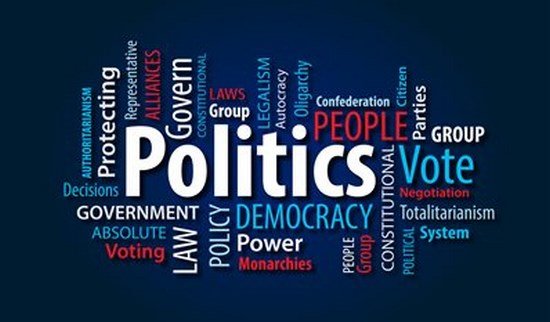zafar Iqbal
In a dramatic and sweeping move, US President Donald Trump has effectively shattered the global trade system that has been in place for over 75 years. With the introduction of a new baseline 10% tariff on goods imported from all countries, as well as higher reciprocal tariff rates aimed at those he accuses of imposing high barriers to US imports, Trump has initiated a new era of protectionism and economic warfare.
The new tariff regime, outlined in Trump’s executive order, represents a bold step in reshaping the US’s economic relations with its trading partners. This strategy, however, has raised serious concerns about the potential consequences for both the US and the world economy. Here’s a deeper look at the key features of the new tariff structure and its implications for global trade.
The cornerstone of Trump’s new tariff policy is the introduction of reciprocal tariffs, which are designed to address issues such as currency manipulation, lax environmental and labor standards, and excessive regulations that prevent US goods from entering foreign markets. These tariffs are being applied with varying intensity, depending on the trading relationships and practices of the countries involved.
Among the hardest hit are key US trade partners. The European Union, for instance, will face a 20% tariff, while countries like Vietnam and Japan will see reciprocal tariff rates of 45% and 24%, respectively. South Korea and Taiwan are also being targeted with tariffs of 25% and 32%, while India’s rate stands at 26%. One of the most striking moves in this new tariff regime is the 34% reciprocal tariff imposed on China, which already had a substantial trade surplus with the US in 2024, amounting to $295 billion.
This hefty tariff hike against China is particularly noteworthy, as it brings the total tariff on Chinese goods to 54%, when combined with the 20% duties Trump imposed earlier in the year over concerns about fentanyl-related imports. Trump’s 2024 election campaign had promised a 60% duty on Chinese goods, and this action seems to bring his administration one step closer to fulfilling that pledge.
Interestingly, countries like the UK, Brazil, and Singapore, which ran trade deficits with the US, have only been subjected to the baseline 10% tariff rate. This move is in line with Trump’s assertion that if foreign nations’ policies were fairer, they would likely run smaller trade deficits with the US. However, the fact that Russia, despite a $2.5 billion trade surplus with the US, was left off the tariff list raises questions about the consistency and strategic logic behind the new regime.
One notable exemption in Trump’s new tariff system is for Canada and Mexico, two of the US’s closest neighbors and trading partners. Goods from both countries are not currently subject to the new reciprocal tariffs, as previous duties related to fentanyl trafficking and border control issues remain in place. However, this does not mean that relations are entirely smooth. The 25% tariffs on steel and aluminum, as well as the 10% duties on Canadian energy and potash, continue to affect trade with these countries.
Despite the ongoing tariff challenges, the recent exemption granted for goods compliant with the US-Mexico-Canada Agreement (USMCA) will provide some relief, particularly for US automakers who rely heavily on cross-border trade. Trump had previously indicated that this exemption would expire, but his administration has now extended it indefinitely, a move that could help stabilize certain sectors of the economy.
Pl subscribe to the YouTube channel of republicpolicy.com for quality podcasts:
It’s also important to note that some tariffs under Trump’s new system won’t be applied on top of the reciprocal duties. For example, goods already subject to 25% tariffs under Section 232 of the Trade Act of 1962, including automobiles, steel, and aluminum, will be excluded from the new tariff regime. This exemption also extends to goods in sectors that are currently under national security investigations, such as copper, lumber, semiconductors, and pharmaceuticals. This complicated layering of tariffs means that some sectors could see a double hit, while others may escape with minimal impact.
A forthcoming annex will provide additional details on other products that may be exempt, including critical minerals and energy products, further complicating the landscape of international trade under the new regime.
Trump’s new tariff regime is set to go into effect in two stages. The baseline 10% tariff will be implemented on April 5, 2025, at 12:01 a.m. EDT, while the higher reciprocal tariffs will be enforced four days later, on April 9, 2025. To justify this dramatic shift in US trade policy, Trump has invoked the International Emergency Economic Powers Act (IEEPA), a 1977 law typically used to impose economic sanctions rather than tariffs.
By declaring a national emergency under IEEPA, Trump has underscored his concerns about the growing US trade deficit, which surged by more than 40% to reach $1.2 trillion in 2024. His executive order claims that this deficit is a result of “asymmetries in trade relationships,” which, according to the administration, have eroded domestic manufacturing capacity and weakened the US’s defense-industrial base.
Critics, however, argue that the use of IEEPA to impose tariffs could lead to significant legal challenges, especially given that tariffs are typically negotiated through multilateral trade agreements or the World Trade Organization (WTO). The fear is that this unprecedented use of IEEPA to target foreign trade could spark retaliatory actions and escalate the global trade war to dangerous levels.
In another significant move, Trump has signed an executive order that permanently ends the duty-free “de minimis” exemption for packages from China and Hong Kong valued under $800. This loophole had allowed Chinese e-commerce giants like Shein and Temu to circumvent US tariffs by shipping goods directly to American consumers. This measure is part of Trump’s broader effort to clamp down on what he views as unfair trade practices, particularly in the realm of e-commerce and direct-to-consumer sales.
This move is in line with previous efforts by the Trump administration to curb the flow of fentanyl precursor chemicals into the US, an issue that was central to the February tariffs on Chinese goods. While the decision to close this loophole is seen as a victory in the battle against illicit trade, the challenge will be in effectively monitoring and enforcing these new measures, particularly given the volume of cross-border e-commerce.
Trump’s latest tariff moves signal a profound shift in US trade policy, one that could have far-reaching consequences for the global economy. While the goal of reducing the US trade deficit is laudable, the implementation of these tariffs risks plunging the world into a prolonged trade war that could disrupt global supply chains and slow economic growth.
As the US prepares to enforce its new tariff regime, the world watches closely, wondering whether this will be the spark that ignites a global economic conflagration or a bold, necessary step toward more balanced trade relationships. Only time will tell if Trump’s gamble pays off or if it backfires, plunging the global economy into chaos.
In the meantime, businesses, governments, and consumers around the world will have to navigate the unpredictable fallout of this unprecedented shift in trade policy.

















